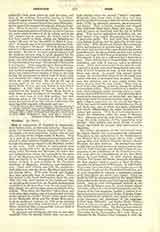

Cree (a contraction of CRISTINO or KENISTENO, their Ojibwa name, of uncertain meaning; they commonly call themselves simply EYTHINYUW UK, men), the largest and most important Indian tribe of Canada, and one of the largest north of Mexico. They are a part of the great Algonquian stock and closely related to their southern neighbors, the Ojibwa, although only remotely cognate to the Blackfeet, farther to the west. Until confined to reservations their various bands held most of the extensive territory about Lakes Winnipeg and Manitoba, the lower Red and Saskatchewan rivers, and eastward to the country of the Maskegon about Hudson Bay, from whom they are hardly to be distinguished. Most of their former territory is now included in the Canadian provinces of Manitoba, Assiniboia, and Saskatchewan. Their chief alliance was with the Assiniboin; their wars were with the Sioux, Blackfeet, and northern Tinneh tribes. With both French and English they have generally been on friendly terms. When first known to the Jesuit missionaries, about the year, 1650, the Cree lived farther to the southeast, but, on obtaining fire-arms from the English trading-posts established on Hudson Bay some twenty years later, they pushed out into the open plains in pursuit of the buffalo. They drove the Blackfeet before them, and at the same time began a war of invasion and extermination against the weaker Tinneh tribes, as far even as the Mackenzie River and the Rocky Mountains.
A great small-pox epidemic in 1781 so far reduced their numbers that they retired south of Churchill River, which has since remained the extreme limit of their claims in that direction.
In physique and intelligence the Cree do not differ markedly from the general Indian type, but are per-haps slightly below the general “plains” standard. Mackenzie, who knew them before they had been greatly modified by contact with the whites, describes them (1790) as naturally generous, good-tempered, and honest. Their primitive weapons and utensils were fashioned from stone, bone, and horn. They used the canoe of birchbark and the tipi of buffalo skins. They had no agriculture or pottery art, but their women were expert skin-dressers and workers in porcupine quills. For their food they depended upon fishing, hunting, and the gathering of wild roots and fruits. Wild plums and cherries were pounded, dried, and preserved in rawhide bags or boxes. Buffalo meat was cut into strips, and dried in the sun for immediate use, or was pounded, covered with melted grease, and kept in skin bags as pemmican for winter. Two pounds of this was a sufficient day’s ration for a man. Their clothing was of dressed skins; their ornamentation and style of hair-cut varied in different bands. Their dead were buried in the ground under a mound of stones, instead of being placed upon scaffolds or in the branches of trees, as was done by the Sioux and others. In accord with general Indian custom, the personal belongings of the deceased were buried with him or destroyed near the grave. Polygamy was common, and a man might marry two sisters at once from the same family. There was no trace of the clan system, as known among the eastern and southern tribes. They sacrificed to a number of gods, their principal myths centring about a super-natural hero called Wisukatcak. They were also great believers in conjurations and witchcraft, and had an influential order of priesthood in four degrees. Their great religious ceremony was the annual Sun Dance. Their two main divisions were distinguished as Wood and Plain Cree, each of which was again subdivided into bands differentiated by slight peculiarities of dialect and custom. With these were sometimes included the Maskegon, under the name of Swampy Cree. On account of the wide extent of their former range the early estimates of Cree population vary greatly. They number now about 15,000, of whom nearly two-thirds are located upon reservations in Manitoba.
The earliest missionaries in the Cree country were the French Jesuits, who accompanied the commander Verendrye in his explorations of the Saskatchewan and Missouri River region from 1731 to 1742. Chief among these were Fathers Nicholas Gonnor, Charles Mesaiger, and Jean Aulneau. No attempt was made at this time to found permanent mission settlements, and the work thus begun was allowed to lapse in consequence of the withdrawal of the French from Canada until after the establishment of the Red River colony by Lord Selkirk. In 1818 Fathers Joseph Norbert Provencher and Severe Dumoulin established the first regular mission station at Saint Boniface, opposite the present city of Winnipeg. In 1822 Father Provencher was made bishop, with jurisdiction over all of Rupert’s Land and the Northwest Territories, and at once proceeded to organize a systematic mission work throughout the whole vast region. Upon his death in 1853 he was succeeded by the noted Oblate Father Alexander Tache, who had come out eight years before. Among other distinguished workers in the same field, all Oblates, may be noted Father Albert Lacombe, author of a monumental grammar and dictionary of the Cree language, besides a number of religious and other translations; Father Valentin Vegreville, founder of five missions, and author of a manuscript grammar and dictionary of the language;
Father Jean Thibault; and Father Emile Petitot, better known for his great work among the remote Tinneh and Eskimo tribes. The Fathers were assisted by sisters of the Order of Gray Nuns. Protestant work was begun by the Episcopalian Rev. John West, as chaplain for the Hudson’s Bay Company in 1820, the Wesleyan Methodists and Presbyterians coming later. The most distinguished Protestant worker was the Wesleyan Rev. James Evans (1840-1861), inventor of the Cree syllabary, which for half a century has been in successful use in the tribe for literary purposes by all denominations. Of the whole number of Cree officially reported as Christian the majority are Catholic and rank high in morality.
JAMES MOONEY

